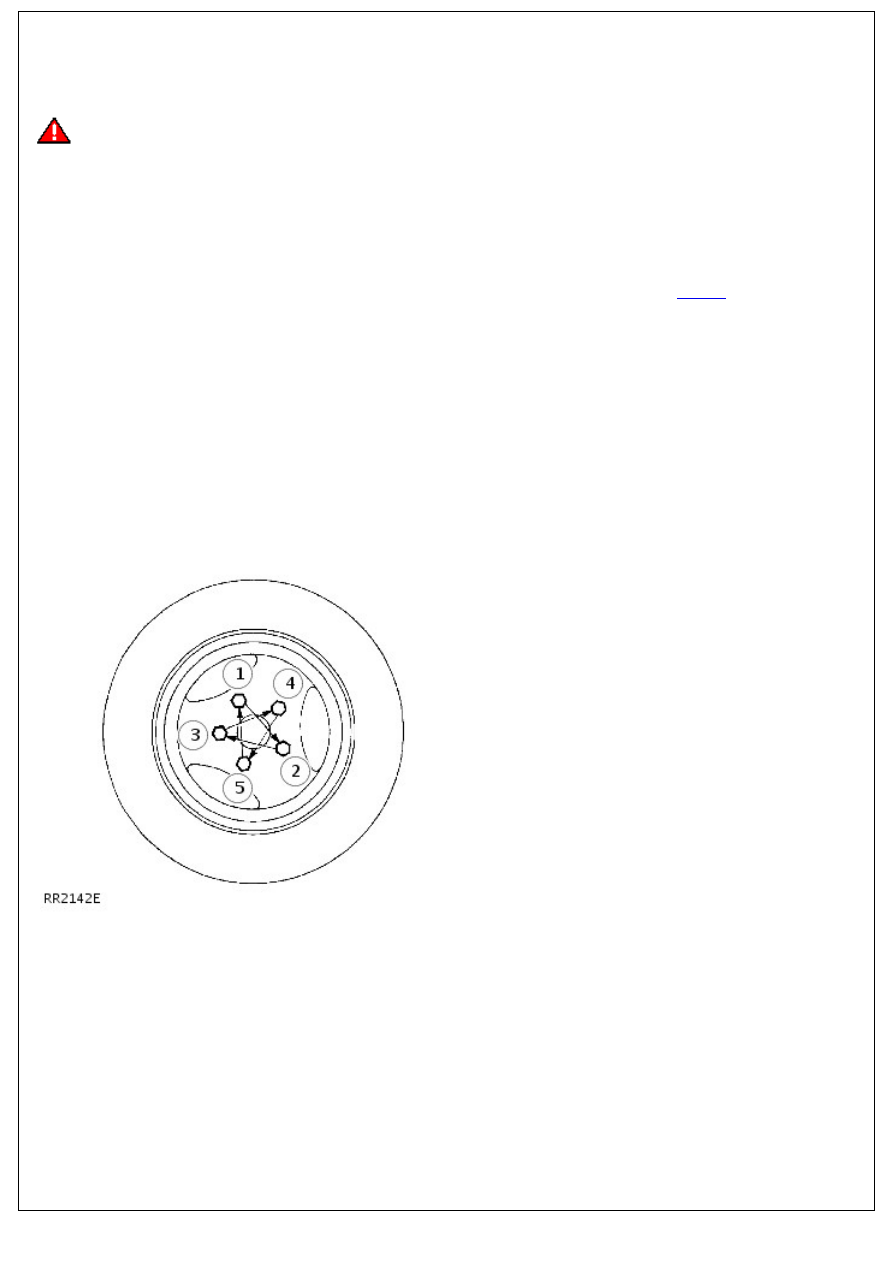Defender. Manual - part 25

Wheels and Tires - Wheel and Tire
Removal and Installation
Removal
WARNING: The parking brake acts on transmission, not rear wheels, and may not hold vehicle when jacking unless
following procedure is used. If one front wheel and one rear wheel is raised no vehicle holding or braking effect is
possible. Wheels MUST be chocked in all circumstances.
1. Apply parking brake, select a gear in main gearbox and
engage low gear in transfer box.
2. Loosen 5 wheel nuts.
3. Using a suitable trolley jack, raise vehicle and place on axle
stands.
For additional information, refer to:
Jacking
(100-02 Jacking
and Lifting, Description and Operation).
4. Remove wheel nuts and carefully withdraw wheel over studs.
Installation
1. Ensure that retaining studs and nuts are clean.
2. Alloy wheels: Lightly coat wheel mounting spigot face with
a suitable anti-seize compound to minimise possibility of
adhesion between wheel and spigot face.
3. Refit wheel taking care not to damage stud threads. (Do not
apply oil).
4. Fit wheel nuts and turn by hand for at least three full
threads before using any form of wheel wrench.
5. Tighten nuts as much as possible using a suitable wrench.
6. Lower vehicle and finally tighten nuts to correct torque
sequence shown.
1. Alloy wheels - 130 Nm
2. Steel wheels - 100 Nm
3. Heavy duty wheels - 170 Nm